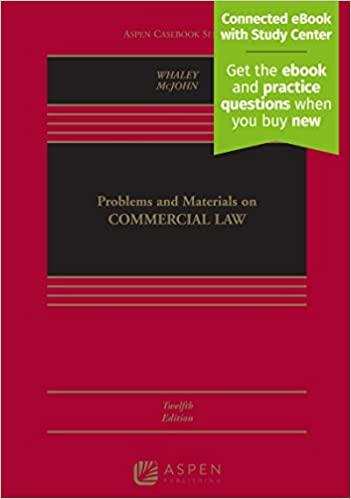Question
1. Explain the determination of the optimal price and output combination in a situation of monopolistic competition. Use the resulting equilibrium to illustrate the statement
1. Explain the determination of the optimal price and output combination in a situation of monopolistic competition. Use the resulting
equilibrium to illustrate the statement that 'production inefficiency is
a necessary price to pay for product variety'. Comment on this
statement.
2. Assess the contribution of business games to the study of decisionmaking processes, illustrating your answer by reference to one
business game with which you are familiar.2.6
3. 'Given that the future is unknown, the best we can do is to estimate
the likelihood of future events and then use expected profit as the
decision criterion.' Discuss.
4. The senior partner in a local accountancy firm is concerned about the
error rate amongst assessments issued by her office. A careful check
over the past few years enables her to estimate that the error rate has
the following probability distribution:
Error rate Probability
0.05 0.25
0.10 0.35
0.15 0.25
0.20 0.15
Each error costs 40 because of the labour time involved in reassessment. Her firm is just entering the assessment 'season', and is
expected to perform 500 assessments over the next few months.
One way to reduce the error rate is to send all staff to a one-day
training course at the local university- 'Precision in Assessment' . The
university claims this would ensure an error rate of 0.05, but she
considers that an error rate of 0.10 would be equally likely.
The course fee is 700 for all her staff, whilst lost profit from one
day's work missed would be 500. Advise her on whether to send staff
on the course or not.
A careful check of that day's output shows that in ten assessments,
two contained errors. Use this information to update the error rate
probability distribution and hence determine whether your advice
needs amendment.
5. 'The fitting of mathematical trend curves is by far the easiest and
cheapest method of forecasting long-run changes in product demand,
and is likely to be just as reliable as any alternative method. ' Discuss.
6. (i) Explain the concept of opportunity loss, and show that the
minimum opportunity loss is equal to the Expected Value of
Perfect Information.
(ii) The failure rate in a particular examination is estimated to be
40%. Construct a table showing the probabilities of 0, 1, 2 . . . 5
students failing in a sample of five.
(iii) 150 graduate entrants are due to take their first professional
accounting exam at the Institute of Certifiable Accountants.
The probability distribution for the failure rate is estimated in
the following table:
Failure rate
0.1
0.2
0.3
0.4
0.5
Probability
0.1
0.2
0.3
0.3
0.1
Each failing student is entitled to a 10 refund on professional
fees. The Institute's senior tutor is confident that she could
ensure a failure rate of 0.1 by holding an intensive revision
course, at a cost to the Institute of 300. Advise the Institute on
whether the revision course should take place.
A tutorial test of five students resulted in no failures. Use this
information to revise the failure rate probability distribution,
and hence reassess the revision course.
7. 'Despite being a small local shopkeeper I can always beat the price
that Woolworths charge for the same product. Woolworths must pay
rent on its store while I own my shop and have no rent to pay.'
Discuss.
8. A firm keeps a record of sales and prices over the past seven months,
resulting in the following table:
Nov. 1985
Dec.
Jan. 1986
Feb.
March
April
May
Price (/ton)
7.5
8.0
8.0
7.2
7.0
8.0
8.5
Sales (tons)
84.5
82.0
84.0
92.0
95.0
92.0
91.5
Use these observations to estimate demand as a linear function of
both price and time. Utilise this function to estimate demand for the
following month, on the assumption that:
(a) price remains unchanged,
(b) price increases to 9/ton.
336 Managerial Economics
Hence estimate the price elasticity of demand between these prices
and find the price which would maximise sales revenue.
Given the nature of the observations, comment on any difficulties in
interpreting your results for decision-making purposes.
9. Critically assess the methods used to generate empirical estimates of
both short- and long-run cost functions. Do the empirical difficulties
encountered rob the resulting estimates of any general operational
utility?
10. 'About half of all advertising expenditure is wasted. The problem lies
in knowing which half.' Discuss this statement and assess the usefulness of managerial models of advertising allocation decisions.
Step by Step Solution
There are 3 Steps involved in it
Step: 1

Get Instant Access to Expert-Tailored Solutions
See step-by-step solutions with expert insights and AI powered tools for academic success
Step: 2

Step: 3

Ace Your Homework with AI
Get the answers you need in no time with our AI-driven, step-by-step assistance
Get Started


